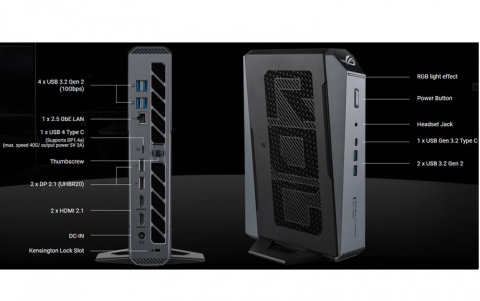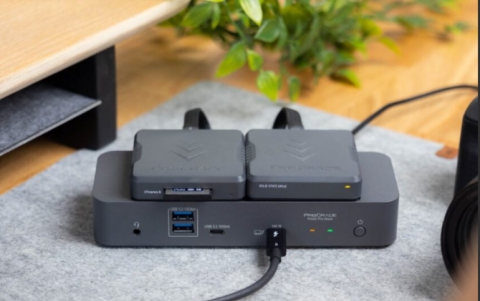
Toshiba, NEC enter next-gen DVD format fray...
The DVD industry is no stranger to significant infighting over formats, with manufacturers supporting one of two rival standards, DVD-R/RW and DVD+R/RW. And it appears that the standards battle will drag on for the foreseeable future. In the latest maneuver, Toshiba and NEC have announced that they are planning to introduce a new format for next-generation DVDs that will be incompatible with formats proposed by Sony and others.
The next-generation format will compete with a standard called Blu-ray, which is scheduled for release as early as next year. That standard is supported by the Blu-ray Consortium, a group of industry heavyweights that includes Sony, Philips, Hitachi, Samsung, Sharp and Thomson Multimedia. Toshiba was one of the few leading electronics makers not to join the consortium when it was organized earlier this year.
Greater Storage
The current DVD standard, which uses uses red light, holds only 4.7 gigabytes of data. In comparison, the consortium's proposed Blu-ray standard will have vastly greater storage capacity, thanks to blue light's shorter wavelength. Blu-ray DVDs will be capable of storing a high-definition Hollywood movie on a single side of a disc, and will have at least 23.3 gigabytes of storage.
Manufacturers will have to make a considerable investment to switch from red to blue laser DVDs, but industry observers said they expect the discs' greater storage capacity will make them a commercial success.
However, despite Blu-ray's benefits, it will feature protective cartridges and other advances that may stymie compatibility with existing products and create confusion among DVD consumers.
Toshiba's Format
In contrast, Toshiba's proposed new format will hold 15 to 20 gigabytes of data. Although this is less storage than the Blu-ray consortium's format, a Toshiba spokesperson said the company's format would have cost and convenience advantages.
"From the manufacturer's side, with our format they can use many of the same facilities they use to make existing DVDs, so costs are much lower," said Toshiba spokesperson Midori Suzuki.
Suzuki added that Toshiba's new format is more compatible with the existing red-laser format and will ease the transition from one format to another. It also will allow the design of players and recorders that handle both red-laser and blue-laser discs.
"From the consumer's side, when a new type of player comes out, they still want to be able to watch the DVDs they already own," she noted.
According to Suzuki, Toshiba's new format has additional design improvements, such as its use of semi-transparent materials to record two layers of data on a single disc side, and advanced image compression technology.
Hatfield-McCoy Redux
Suzuki said that in the future the Toshiba format and the consortium's "would not necessarily be competing formats." She suggested that the Blu-ray format may still become the industry standard, adding that Toshiba continues to develop Blu-ray technology and may support it in the future.
Meanwhile, a Sony spokesperson said Sony's commitment to the Blu-ray format is firm but declined to comment on whether Toshiba's proposal could derail Blu-ray's acceptance as an industry standard.
But Toshiba's approach gives the company a significant advantage. As Aberdeen Group research director Russ Craig told the E-Commerce Times: "The Toshiba format is backward-compatible, unlike the industry consortium format. So Toshiba-NEC have analyzed the market requirement better.
"If they get theirs into the market first, it will be very interesting to see what happens to the consortium. It's certainly going to be a battle going forward."
Greater Storage
The current DVD standard, which uses uses red light, holds only 4.7 gigabytes of data. In comparison, the consortium's proposed Blu-ray standard will have vastly greater storage capacity, thanks to blue light's shorter wavelength. Blu-ray DVDs will be capable of storing a high-definition Hollywood movie on a single side of a disc, and will have at least 23.3 gigabytes of storage.
Manufacturers will have to make a considerable investment to switch from red to blue laser DVDs, but industry observers said they expect the discs' greater storage capacity will make them a commercial success.
However, despite Blu-ray's benefits, it will feature protective cartridges and other advances that may stymie compatibility with existing products and create confusion among DVD consumers.
Toshiba's Format
In contrast, Toshiba's proposed new format will hold 15 to 20 gigabytes of data. Although this is less storage than the Blu-ray consortium's format, a Toshiba spokesperson said the company's format would have cost and convenience advantages.
"From the manufacturer's side, with our format they can use many of the same facilities they use to make existing DVDs, so costs are much lower," said Toshiba spokesperson Midori Suzuki.
Suzuki added that Toshiba's new format is more compatible with the existing red-laser format and will ease the transition from one format to another. It also will allow the design of players and recorders that handle both red-laser and blue-laser discs.
"From the consumer's side, when a new type of player comes out, they still want to be able to watch the DVDs they already own," she noted.
According to Suzuki, Toshiba's new format has additional design improvements, such as its use of semi-transparent materials to record two layers of data on a single disc side, and advanced image compression technology.
Hatfield-McCoy Redux
Suzuki said that in the future the Toshiba format and the consortium's "would not necessarily be competing formats." She suggested that the Blu-ray format may still become the industry standard, adding that Toshiba continues to develop Blu-ray technology and may support it in the future.
Meanwhile, a Sony spokesperson said Sony's commitment to the Blu-ray format is firm but declined to comment on whether Toshiba's proposal could derail Blu-ray's acceptance as an industry standard.
But Toshiba's approach gives the company a significant advantage. As Aberdeen Group research director Russ Craig told the E-Commerce Times: "The Toshiba format is backward-compatible, unlike the industry consortium format. So Toshiba-NEC have analyzed the market requirement better.
"If they get theirs into the market first, it will be very interesting to see what happens to the consortium. It's certainly going to be a battle going forward."





















